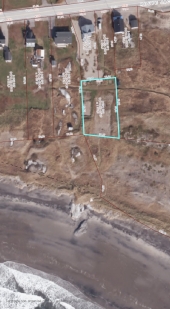It appears that the developer of the system is applying the old adage, "the solution to pollution is dilution." He is likely producing amounts of waste that are similar to his competitors, but the deeper water dilutes the waste before, or as, it settles to the bottom. The video itself is shallow on facts and deep on propaganda, I wouldn't be making life or business decisions based on it. It was evident in the video that the sphere needs constant cleaning to keep it from becoming encrusted with sea life, sealing the fish and their waste inside.
As a concept, I think floating paddocks, without supplemental food, would be extremely difficult and pricey to manage. Fish ranching is a possibility. You can create a sheltered nursery and improve "grazing" with artificial reefs and floating islands. Predator control and "rustlers" could be a big problem. (As an aside, there is a serious problem with piracy in the third world. Shipments of processed (packaged) seafood are often intercepted on their way to port and fish farms are often raided for payroll and equipment.)
Many of the problems associated with fish farming can be, and in many cases, are, alleviated with polyculture. Mixing complimentary species maximizes feed utilization and can include periphyton-based
aquaculture that utilizes the waste stream from farm animals. If you want to get even more complex, you can experiment with integrating all that into an aquaponics system.
I did some research a few years ago on improving artisanal fisheries. There is a lot of good literature available online, if you want to pursue your ideas.






